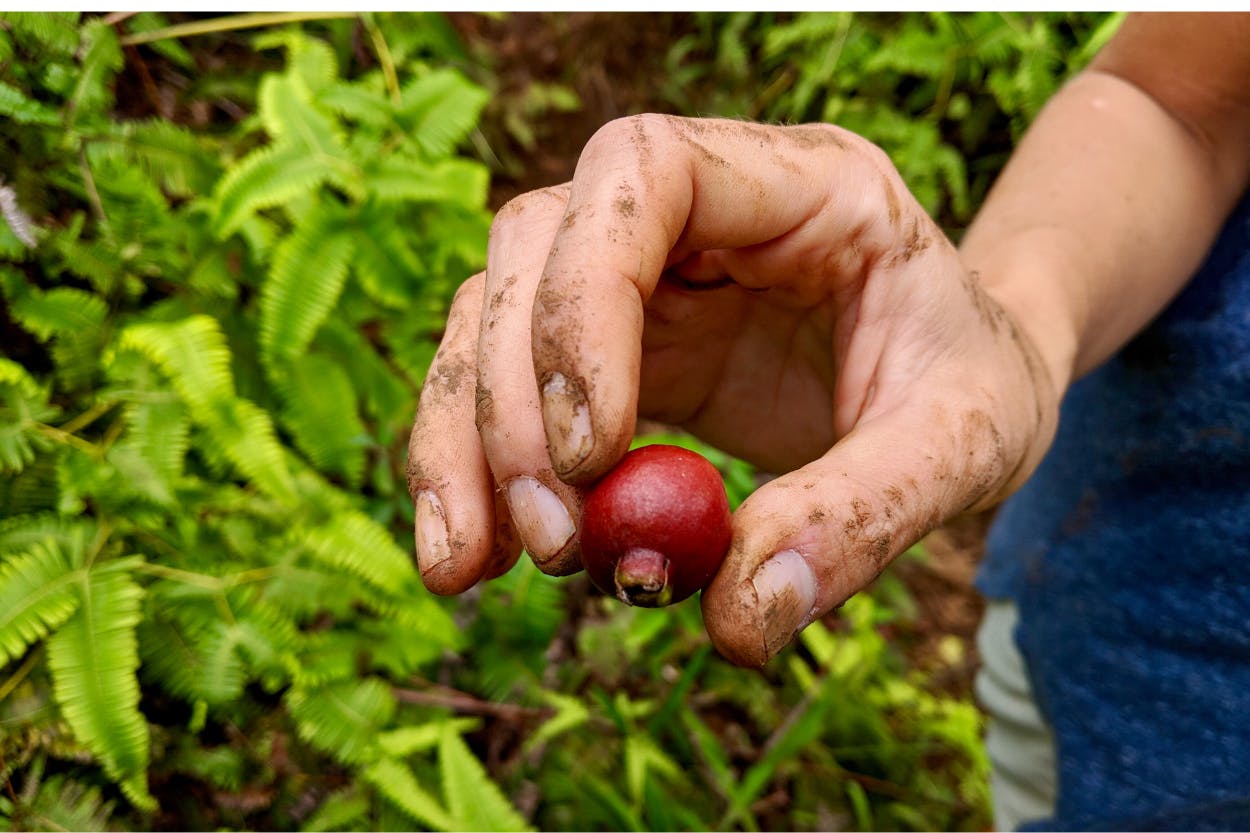If you happen to go for a hike while visiting Hawaii, chances are you will come across a strawberry guava (psidium cattleianum) tree. Its bright red berries are a juicy treat and can be eaten straight from the tree or made into jam. When trees are producing heavily, you can smell the aroma of the sticky sweet fruit from far away, which not only attracts hungry hikers, but pigs and birds as well. This seemingly harmless tree has a secret however. It’s a killer.This tiny fruit has caused big damage to Hawaiian forests.
To first understand the almost sinister nature of the strawberry guava, you must first understand a Hawaiian forest. Simply put, millions of years ago when our islands had finally cooled from their molten births, plants arrived by wind or sea, while others are believed to have originated here from the beginning of creation. Eventually, an ecosystem formed, so unique, that none other on earth was like it. Because of the archipelagos isolation, many plants lost their natural defenses due to the lack of predators. For example, Mint lost its minty taste and raspberries lost their thorns. Plants and animals adapted to each other to create an intricate web of interdependency, until the aliens came.
If you’re thinking of little green men with probes, think again. The aliens that arrived in Hawaii had hooves, seeds and an insatiable thirst to survive. Many of these plants and animals took over too. The impact on the native ecosystem was so massive, that Hawaii is now known as the endangered species capital of the world. There are more endangered species per square mile in our islands than any other place on the planet.
It is said that that the major player in the degradation of Hawaiian forests is the strawberry guava. This tree was introduced to Hawaii in 1825 for its fruit and ornamental wood. Originally native to Brazil, the strawberry guava began to spread quickly in the wild through the digestive tracts of birds, livestock and wild pigs. The trees quickly form dense, monotypic (def: of only one species) stands, choking out any other plant life in the area. It is believed that hundreds of thousands of acres in the Hawaiian Islands are covered in strawberry guava stands. Currently, the state is proposing the release of a Brazilian insect to control the strawberry guava populations. The Puu Pia hike in Manoa is one of the native forests that the strawberry guava can be found.
If you are visiting the islands and decide to go on one of our many beautiful hikes, you are very likely to come across strawberry guava trees. Some hikes that have dense stands of guavas are at Pu’u Pia in Manoa and the beginning of the Hawaii Loa Ridge trail. Trees are usually about seven to 10 feet tall but can grow to over 20 feet. Its fruits are a deep red when ripe and get to the size of large marbles. Feel free to taste its sweet-tart flesh but remember to not spit out the seeds or spread the fruit. Together we can all do our part, no matter how small, to help our Hawaiian forests.




